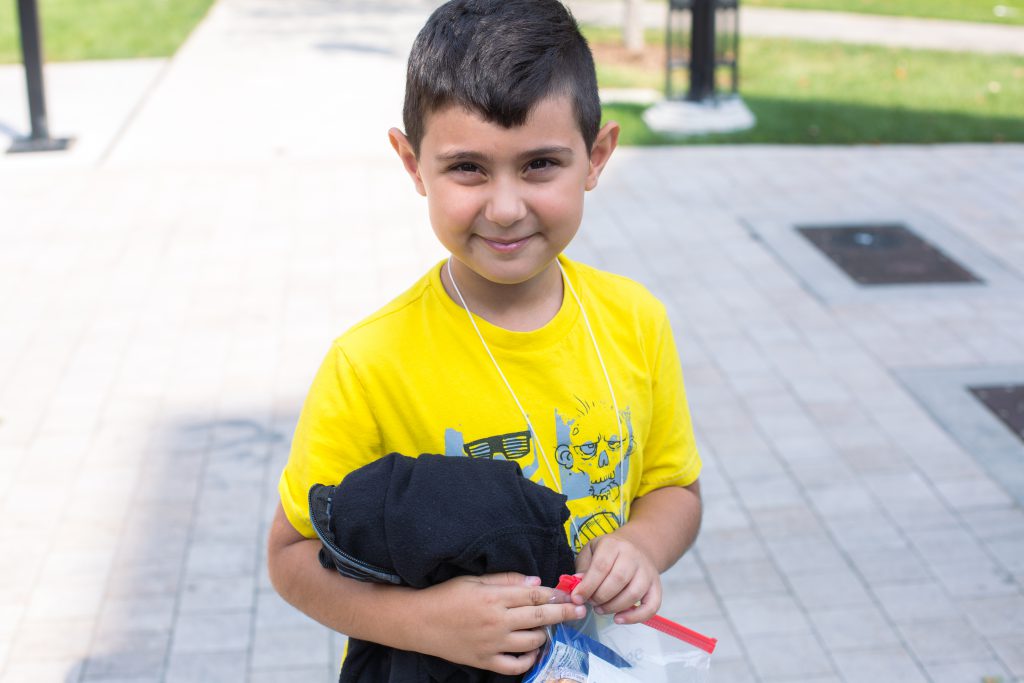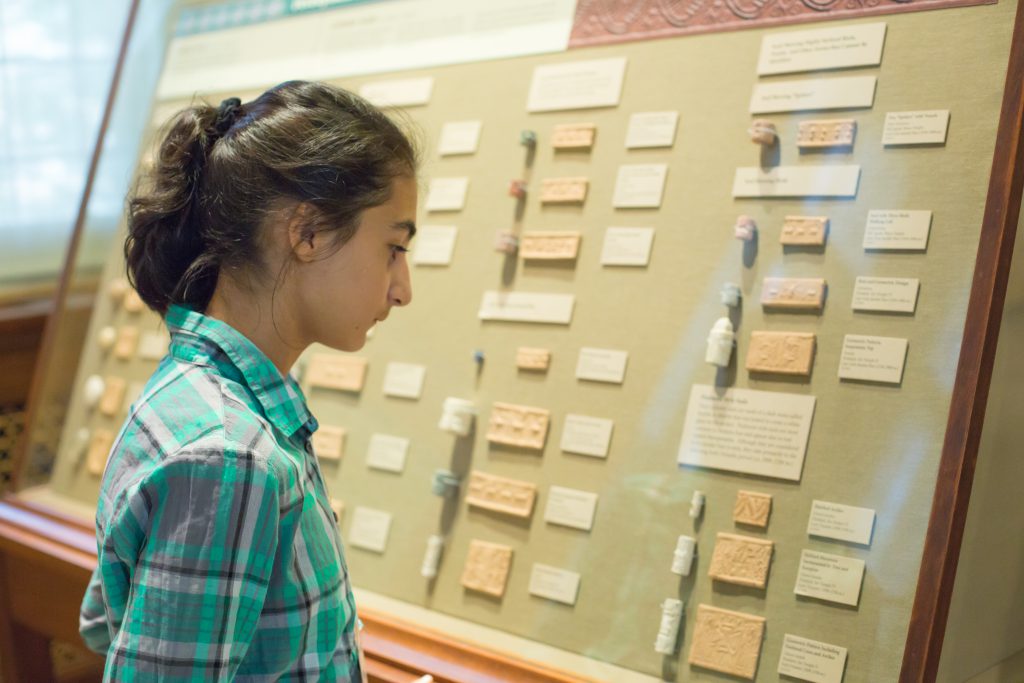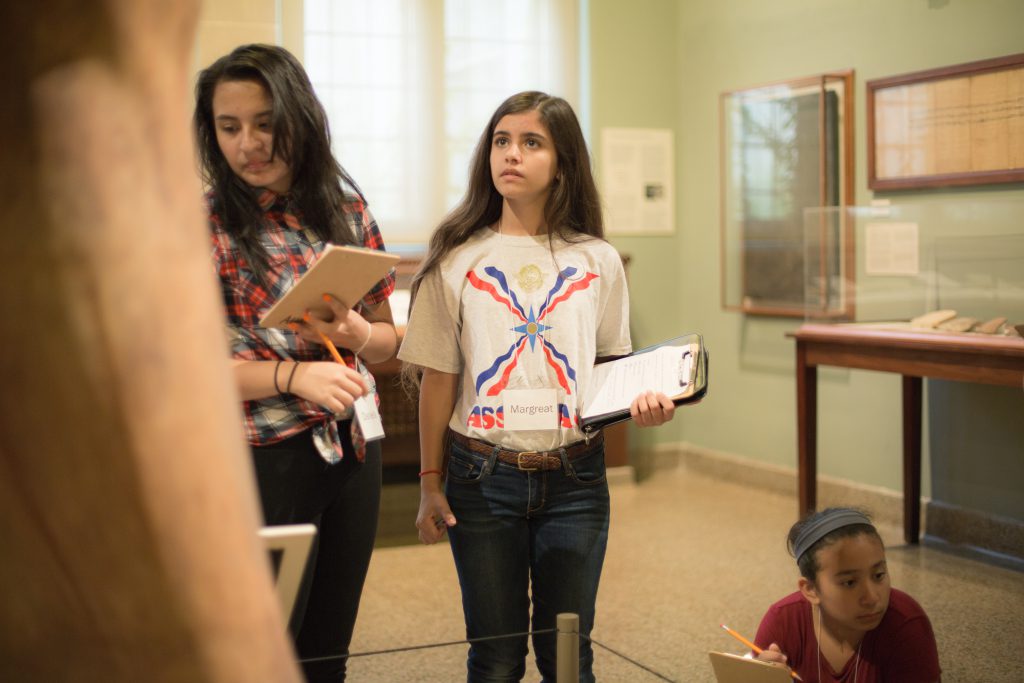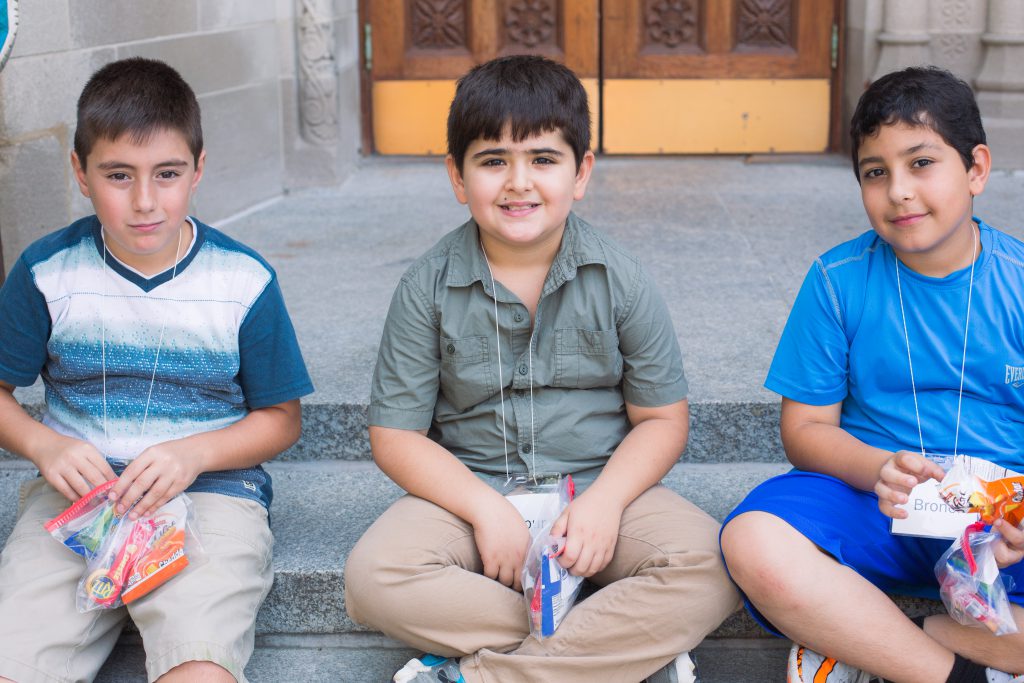Q&A with author Dr. Sargon Donabed
Date: September 27, 2016
Sargon Donabed recently published his newest book, Reforging a Forgotten History. He completed his PhD at the department of Near and Middle Eastern Civilizations, University of Toronto in 2010.
Q: What inspired you to pursue Assyrian studies?
Feeling that an injustice had been done and that I was duty-bound to correct it. That was the eternal optimist in me. The one who read too many fantasy novels about chivalry and honor and the like. I suppose I at times also like to swim upstream. I don’t know exactly why, but I suspect it is because most humans enjoy being contrarian at times. 
Q: What does an average day look like for you at work?
Well now that I am the chair of my department it is a gigantic disaster of emails. Walk, breakfast, play with my daughters (1 human, 2 feline), head to work, teach courses, answer more emails, come up with projects and ideas I may never have time to do, read TPS reports, speak with Bill Lumbergh, you know, the usual.
Q: What prompted you to author Reforging a Forgotten History?
I wish I could say it began as something other than a thesis – but in reality that’s where it came from. So I suppose in a way I was forced to write it in order to graduate. At least the first rendition. But then I simply wanted the story to be available for people to read. And I wanted to challenge the academic status quo which has in the past shown little room for the inclusion of the Assyrian narrative/s.
Q: Can you elaborate a bit on what you mean by ‘forgotten history’?
Essentially that the history has been forgotten. No one remembers it or even cares to remember it. Not scholars, politicians, nor in many cases the people themselves. But it was and is a part of the puzzle and necessary to make it more vivid and complete.
Q: What was the most challenging part of writing this book?
The personal stories. The emotional ties that one develops to the work and its subjects. It was quite draining at times. I must admit that in any such cerebral and emotional situation, it is good to have some kind of a physical outlet. Also meditation or contemplative prayer – including communing with nature in whatever form that takes – is a must to retain focus and conviction.
Q: Have you traveled to the homeland? What was it like?
“Well, China’s in the heart, Jack. Wherever I go, she’s with me.” I have a difficult time with notions of home. Home to me is where my friends and family are – I have seen a frightening trend in the Assyrian community wher e there is now some kind of a formula that makes one Assyrian. And there are varying degrees. Today things are Iraq-centric, again to me an issue. So ‘homeland’ for many Assyrians means somewhere in Iraq. But it is the same with those from Tur Abdin or Gozarto or Urmia. Perhaps a bit less so but some of it still exists.
e there is now some kind of a formula that makes one Assyrian. And there are varying degrees. Today things are Iraq-centric, again to me an issue. So ‘homeland’ for many Assyrians means somewhere in Iraq. But it is the same with those from Tur Abdin or Gozarto or Urmia. Perhaps a bit less so but some of it still exists.
Q: Three words that come to mind when you hear the word Assyria:
Neglect, politics, vision.
Q: What do you believe is the greatest challenge facing the Assyrian diaspora?
Integration and acceptance that the diaspora is also home. Everyone came from somewhere, someplace else – and I mean that in a holistic sense across the globe. Thus when you are home, what must you do? Take care of it. Your house, town, state/province whatever. Care for it like you would anyplace. I take issue with a homeland political focus that neglects places outside of the Middle East; neglects culture, and thus is against amalgams. It is a reality and any culture that is stagnant will die.
Furthermore, I hope people begin to support their children to follow their hearts in finding some type of work that moves them, makes them happy, gives them purpose. Not everyone finds such a place but to assume success is dictated by money or station or degree is sad. It takes a multitude of individuals doing a range of things to constitute a thriving ecosystem. When one segment is off, all suffer. It takes a village and all that, and certainly everyone in the village isn’t a doctor or a lawyer or a professor for that matter.
Q: Describe the Assyrian community in Boston.

Assyrians of Eastern Massachusetts by Sargon Donabed and Ninos Donabed published in 2006.
There really isn’t a community in Boston anymore. In the early part of the 20th century there were Assyrians who had moved to the city, predominantly from Harput in the Ottoman Empire and later Turkish republic. But as the town was destroyed in WWI, the flow of immigrants stopped. Worcester, an hour from Boston, is a bit different and has a more continuous current. Unfortunately being Assyrian is a bit taboo among people who are adherents of the Syrian/Syriac Orthodox Church (formerly known as Assyrian Orthodox and earlier as Assyrian Apostolic Church of Antioch) who make up the majority of people in the state. It’s a disaster really, and when the church changed its name officially, the original settlers and their descendants went through real mental and emotional anguish. Imagine a religious institution telling its people they are not what they have identified as for ages? Then ridicule them and force them to either leave or simply be the butt of jokes and harassing. Sad and a major contribution to the Balkanization of the Assyrian community, especially in the USA.
Q: Is it important to you that your children speak Assyrian?
Language is an important and wonderful element of human culture. It is also a tool. It is not a necessity that one speak Assyrian to be Assyrian in my mind. But if one speaks Assyrian why not try and preserve it and help it grow? It would only seem logical to me that such is the case, especially as it gives to the beautiful tapestry of cultures around the globe.
Q: You are very passionate about animal rights as well as wildlife and environmental conservation. Can you explain what drew you to these important issues?
I think it’s asinine to live in world with an infinite amount of life around us (and within/on us) on a daily basis and not realize we share this world, this existence with so many others. In a largely anthropocentric existence where in 20 years humans have actively destroyed 10% of the wild spaces on the planet I think it is the duty of humans to learn to be producers once more and not solely consumers. There must be a symbiosis of existence. And in an attempt to not lose sight of the trees for the forest, to understand that humans too are animals, and that just as the individual life matters, non-human animals are also individuals and are deserving of the same life, freedoms, and respect/reverence. I challenge everyone to try and lead a more compassionate existence of thinking beyond themselves. Tough in a society of me me me but I think it can and should be done.
 Q: What are some of your hobbies?
Q: What are some of your hobbies?
I have a deep love of martial arts and yoga. I have practiced Goju Ryu karate and White crane and Long Fist Kung Fu. For yoga, I am partial to ashtanga though I have practiced hot/Bikram and Kundalini at times. I love my volunteer work at the local animal shelter. It is kind of a home away from home. Enjoy hiking/camping, kayaking etc. Anything outdoors where you can smell the elements. I am also a big fan of fantasy books and film and love comic cons etc. So thankful to my folks that they wanted us to learn every sport possible, so my brother and I enjoy playing a variety of sports. Go with the season I suppose.
Q: So you’re a sports fan. Name your favorite teams.
Every Bostonian is – “They hate us cuz they aint us” – I mean it’s kind of life here. I am partial to the Pats, Celts and Bruins….but I must admit Fenway is a great venue on a summer day or evening.
Q: What’s your favorite quote?
Oh I have so many. My mother has some doozies but I think I may try to patent them first. I hope I have some great ones one day. Here are a few:
Henry David Thoreau: “Not till we are lost, in other words not till we have lost the world, do we begin to find ourselves, and realize where we are and the infinite extent of our relations.”
Tolkien: “I wish it need not have happened in my time,” said Frodo. “So do I,” said Gandalf, “and so do all who live to see such times. But that is not for them to decide. All we have to decide is what to do with the time that is given us.”
Chief Dan George of the Tsleil-waututh Nation of Burrard Inlet, British Columbia: “If you talk to the animals, they will talk with you and you will know each other.”
Wendell Berry: “Care allows creatures to escape our explanations into their actual presence and their essential mystery. In taking care of fellow creatures, we acknowledge that they are not ours; we acknowledge that they belong to an order of harmony of which we ourselves are parts. To answer to the perpetual crisis of our presence in this abounding and dangerous world, we have only the perpetual obligation of care.
Tad Williams: “The Qanuc-folk of the snow-mantled Trollfells have a proverb. “He who is certain he knows the ending of things when he is only beginning them is either extremely wise or extremely foolish; no matter which is true, he is certainly an unhappy man, for he has put a knife in the heart of wonder. The Qanuc have another saying: ‘Welcome stranger. The paths are treacherous today.”
Bill and Ted: “Be excellent to each other. Party on dudes.”
Oh so many. Most of the best of them I have found among fantasy authors from Robert Jordan to Steven Erikson and Raymond Feist.
Q: What are you most proud of about your work?

Dr. Donabed giving a lecture in Chicago.
That I could do something to help, something to honor my parents and grandparents but also my teachers and all that they had imparted to me through the years. The ‘me’ without them and their love and inspiration didn’t accomplish anything. Additionally, I like the fact that much of it flies in the face of what many take as canonical. It is a good thing to defend those who are defenseless.
Q: What are you working on next?
I almost always have too many wild schemes I am working on. A general text on Assyrians. Some conferences. A fantasy novel. Trying to get a new shelter built in my town, some wildlife crossings up in important migration areas, having fun with my family and friends, and winning a fantasy football championship. Oh and opening a brewery/distillery/winery in a town called the Shire which is down the street from Rivendell where the pubs lack TVs and everybody knows your name.
Q: What do you hope readers will take away from your books?
That stories are powerful. That we tell them to others and ourselves everyday. They shape our lives. Furthermore everyone and everything has one and every single one has meaning, has significance. Don’t ever forget that. In the microcosm, that the Assyrians matter. To steal another Tolkienism, “Even the smallest person can change the course of the future” – I would only add that I would define ‘person’ in the broadest sense possible.
Q: Where can people purchase your books?
Most of the books are on Amazon. I am also working with some students to get a website built on sargondonabed.com, and I have an author page on Facebook. I generally loathe using social media…but for some things I must admit it has its uses I enjoy exploiting.
 Follow Sargon on Facebook.
Follow Sargon on Facebook.






 e there is now some kind of a formula that makes one Assyrian. And there are varying degrees. Today things are Iraq-centric, again to me an issue. So ‘homeland’ for many Assyrians means somewhere in Iraq. But it is the same with those from
e there is now some kind of a formula that makes one Assyrian. And there are varying degrees. Today things are Iraq-centric, again to me an issue. So ‘homeland’ for many Assyrians means somewhere in Iraq. But it is the same with those from 
 Q: What are some of your hobbies?
Q: What are some of your hobbies? 








